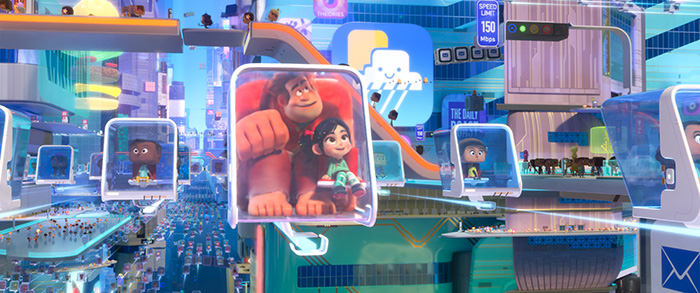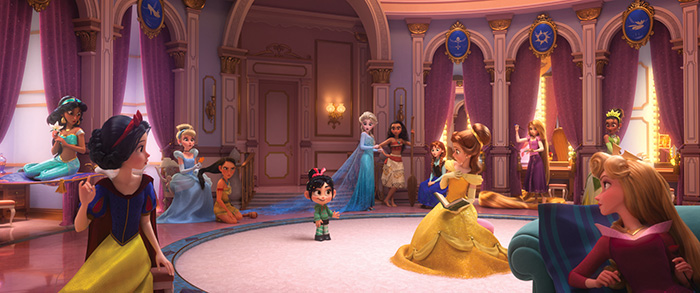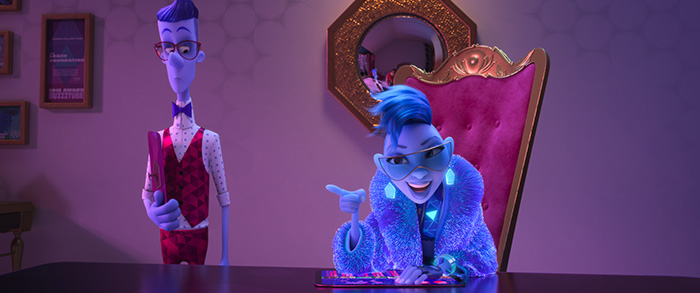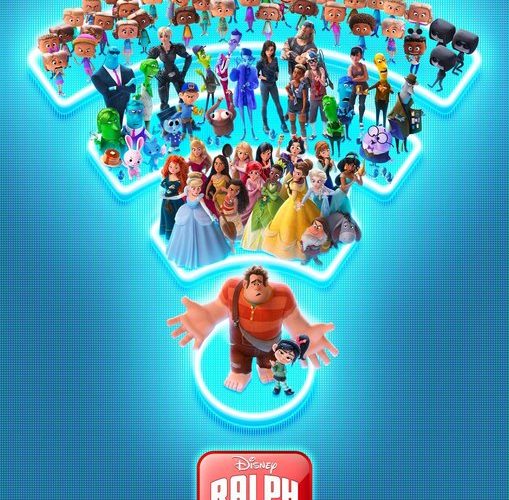I knew things weren’t going to go as hoped when the lack of a short film before Ralph Breaks the Internet brought a filmed introduction by three of its middle-aged, male creators instead. They pretend as though they’re personally beaming themselves into our theater to share their gratitude with fake buffering circles freezing frames every now and then as one tells us the hardest part of making this sequel was fitting everything they love about the internet in. It’s spoken with a transparent insecurity boomers have when speaking about trendy topics they know superficially. But you go with it because, why not? Well the answer arrives when another asks, “How do I turn this off?” Let’s just say these dad joke-spouting, contradictory “tech wizards” set the stage perfectly.
The reason I loved Wreck-It Ralph (and still do after numerous re-watches) is because it didn’t do what I thought it would. Its trailers made it seem as though the film would prove an easy attention grab for vintage and contemporary game lovers alike that manufactured in-jokes and references to replace any need for quality storytelling. And to an extent the first twenty or so minutes do that with a ton of licensed properties interacting as part of a power-strip community of hard working heroes and villains with Easter eggs everywhere the eye can see. So it’s great when Ralph (John C. Reilly) subverts expectations by entering “Sugar Rush” and staying there despite our assuming it was one of many stops with fun shenanigans devoid of purpose.

Screenwriters Phil Johnston (who co-directs the sequel alongside a returning Rich Moore) and Jennifer Lee realized the videogame aspect was best suited for comic relief, aesthetics, and underlying mechanics. Rather than lean on “game-jumping” to water-down what made it special, the two shifted gears by aligning Ralph with a kindred spirit suffering from similar issues as he (isolation, pariahdom, etc.) in “Sugar Rush’s” star racer Vanellope (Sarah Silverman). We were allowed to bask in the intelligence of what they distilled from an obviously thoroughly researched history of gaming and gamers by watching a complexly satisfying dramatic arc play atop it. They used nostalgia to draw us in and then delivered an emotionally potent morality tale without the cheapness relying on “winks” would provide as more than welcome color.
They could do this because they confined themselves to a single arcade. Much like Toy Story, these working class citizens have certain hours of the day to rest and relax after putting on a show for their human consumers. Expanding that playing field to the internet was always going to be a challenge if only because going online means “working” 24/7 without break (Johnston and co-writer Pamela Ribon ignore this fact, though). Suddenly you’re beholden to more rules than one (if you die outside your game, you die for real) and infinite characters, properties, corporations, and concepts that nobody could hope to wrangle together in a single two-hour film. So where the original grounded itself within its conceit, Ralph Breaks the Internet‘s much broader one inevitably consumes it.
Here’s the good news: this fact doesn’t prevent the filmmakers from delivering a great message for children about friendship in the twenty-first century not needing to rely on constant proximity or interaction. We meet the characters six years after the original with Ralph and Vanellope still thick as thieves. While he’s a simple guy craving routine, though, she yearns for more. When Ralph attempts to supply some fresh excitement on the pixel side of “Sugar Rush,” a young girl in the real world accidentally breaks the arcade unit’s steering wheel off. Mr. Litwak (Ed O’Neill) sees no other option but to unplug the game and have it be recycled since he can’t afford a replacement part going for two hundred dollars on eBay. Vanellope becomes homeless.

Luckily for all involved, Litwak recently upgraded his aging technology by plugging a wireless router into the main power-strip. Ralph tells Vanellope they can go into the internet, find eBay, and win the steering wheel themselves. So they follow a digital avatar of Litwak and get transported through the Ethernet line to a central processing digital metropolis where skyscrapers adorned by Pinterest, Twitter, Amazon, Google, and more reside. They’re bombarded with pop-up ads, frustrated by a search engine, and completely out of their element once the concept of money is introduced. After a series of convoluted and over-explained machinations, the two friends are given twenty-four hours to earn twenty thousand dollars with which to payoff their laughably high bid. And down to the internet’s seedier corners they go.
Here’s the problem: the filmmakers now must simultaneously explain and use a brand new environment consisting of moving parts many adults can’t fully grasp let alone young children. So rather than let the clash between Ralph’s insecurities and Vanellope’s dreams for bigger things exist on its own, the pacing is constantly slowed down with expository interjections to prove Moore and company are hip to the world wide web. There’s JP Spamley (Bill Hader) teaching kids about mining loot (a practice that helped make Steve Bannon’s fortune and put him in touch with MRA, white supremacist types). There’s an algorithm in Yesss (Taraji P. Henson) who exposes them to the world of viral videos commodifying stupidity into profit. And of course the Dark Net’s super-virus Double Dan (Alfred Molina).
These characters are check-stops. They aren’t like Felix (Jack McBrayer) and Calhoun (Jane Lynch) — equals who advance the plot and grow on their own. While those two are relegated to bookend duty back home, Spamley, Yesss, and “Grand Theft Auto” facsimile “Slaughter Race” star Shank (Gal Gadot) replace them as two-dimensional barriers to supply side quest gags. Shank at least provides Vanellope some much-needed empathy too when Ralph becomes selfish to the point of oppressive psychological softboy abuse. She lends Vanellope a friendly ear because Ralph is too blinded by his own lack of ambition to listen to the resonant struggles she endures independently of their friendship together. Shank is a role model whose “I just play a sociopath on TV” sentiments excuse her problematically murderous day job.

It’s this descent into sabotage on behalf of Ralph that ultimately renders him the film’s true villain. He unleashes a virus that amplifies his personal feelings of inadequacy to turn the whole into a giant metaphor for what the internet is today: a cesspool of whiny boys lashing out when they don’t get what they think they’re entitled to from the women they befriend. This thematic line of thinking is weird considering Ralph and Vanellope’s relationship is strictly platonic, but that level of half-execution runs rampant throughout the film. If any kids movie needed to be written by twenty-somethings, it’s this one because they can see beneath the surfaces older people projecting obsolete life-experiences onto present-day behavior can’t. They know the hidden meanings behind “innocent” fun.
So while the youngsters will learn friendship can actually grow and evolve through distance — a powerful, necessary, and healthy lesson most kids’ fare ignores for team-building exercises of inclusivity — it comes with some major caveats. What Ralph does to Vanellope goes way beyond him having an epiphany that you could argue he already had in the previous film, but it’s glossed over for a happy ending to her detriment. What the princesses (along with Groot, Stormtroopers, and Disney branding at-large) represent is probably the grossest form of self-interested product placement I’ve ever seen. And where Yesss scratches the surface of the internet’s true horrors in plain sight, she also reinforces the infrastructure that supports them to ensure viewers become the consumers Disney, Google, and Amazon need to survive.
Ralph Breaks the Internet is now in wide release.

